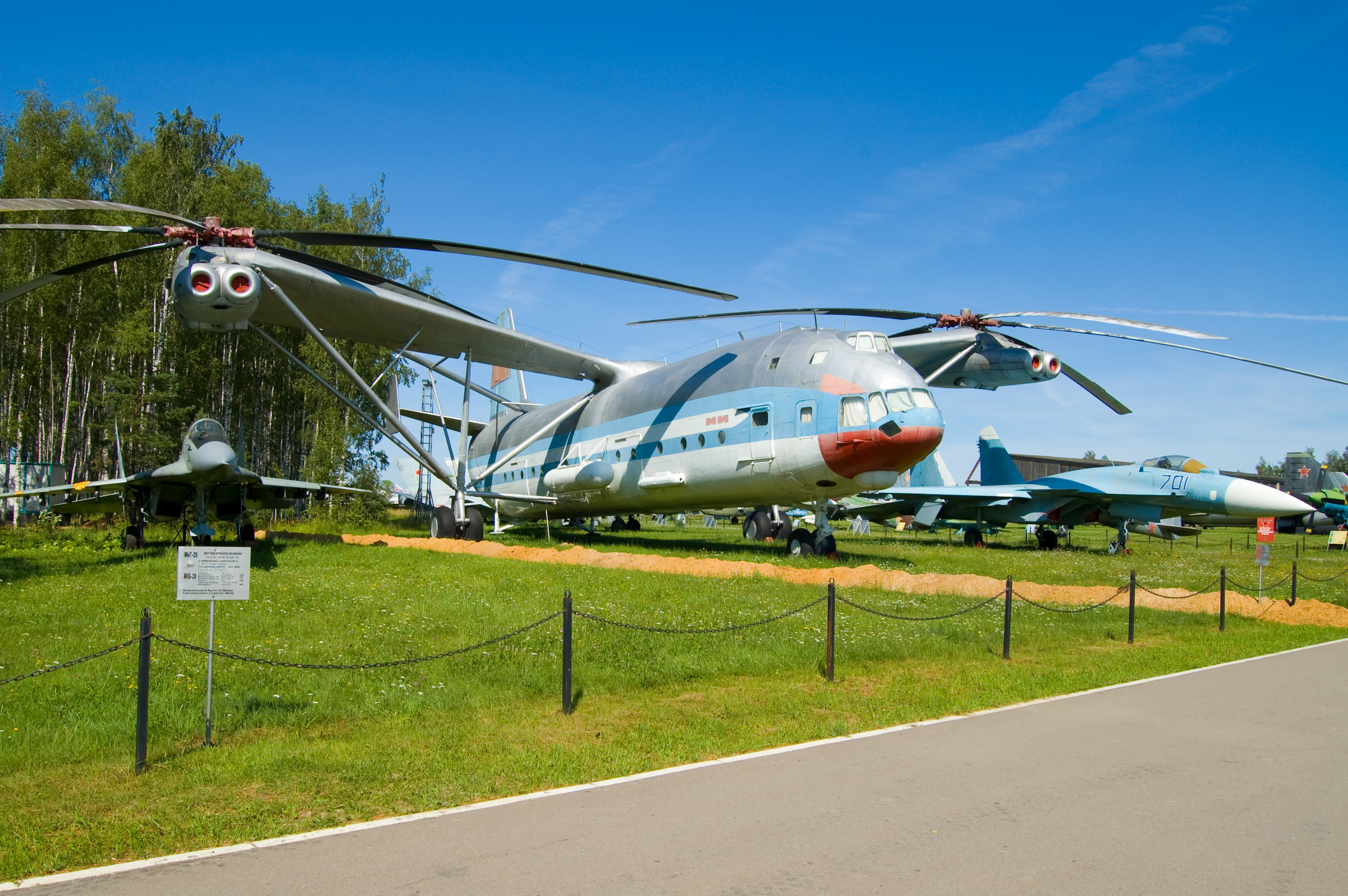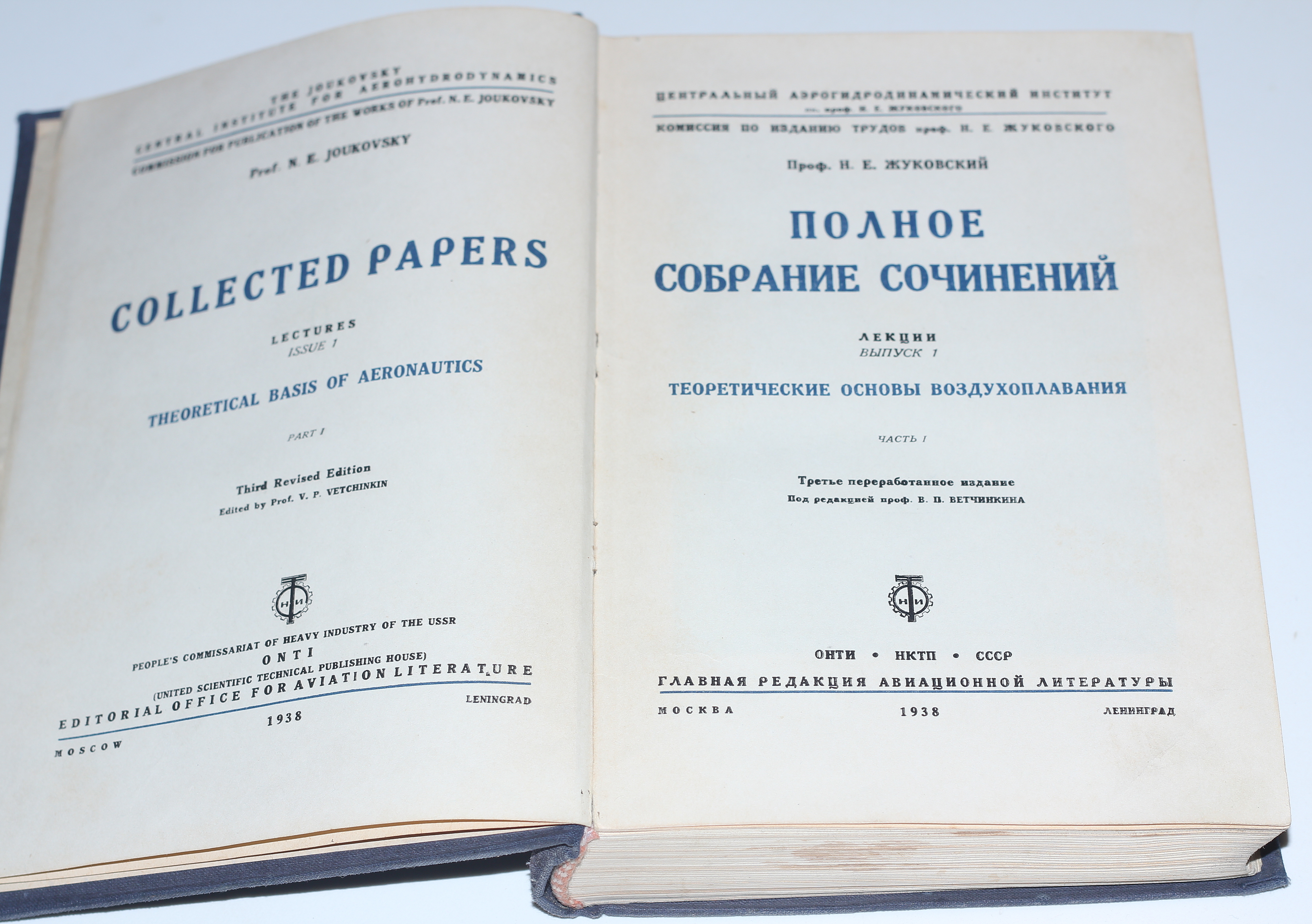|
Mikhail Mil
Mikhail Leontyevich Mil (russian: Михаи́л Лео́нтьевич Миль; 22 November 1909 – 31 January 1970) was a Russian aerospace engineer and scientist. He was the founder and general designer of the Mil Moscow Helicopter Plant. Biography Born to a Russian family in Irkutsk. His father was an employee of the Trans-Siberian Railway, and his mother was a dentist. His grandfather was a cantonist who had been drafted from Libava (today Liepāja), Latvia, and who settled in Siberia after 25 years in the Imperial Russian Navy. At age 12 Mil won the first prize in a model glider competition. In 1926 he entered the Siberian Technological Institute in Tomsk; however, since there was no curriculum for aeronautical engineering, he decided to transfer in 1928 to the Don Polytechnical Institute in Novocherkassk, where he was able to specialise in aviation. He married a fellow student, P.G. Rudenko, in 1932 and 4 daughters and a son followed. After graduating from the ... [...More Info...] [...Related Items...] OR: [Wikipedia] [Google] [Baidu] |
Irkutsk
Irkutsk ( ; rus, Иркутск, p=ɪrˈkutsk; Buryat and mn, Эрхүү, ''Erhüü'', ) is the largest city and administrative center of Irkutsk Oblast, Russia. With a population of 617,473 as of the 2010 Census, Irkutsk is the 25th-largest city in Russia by population, the fifth-largest in the Siberian Federal District, and one of the largest cities in Siberia. Located in the south of the eponymous oblast, the city proper lies on the Angara River, a tributary of the Yenisei, about 850 kilometres (530 mi) to the south-east of Krasnoyarsk and about 520 kilometres (320 mi) north of Ulaanbaatar. The Trans-Siberian Highway (Federal M53 and M55 Highways) and Trans-Siberian Railway connect Irkutsk to other regions in Russia and Mongolia. Many distinguished Russians were sent into exile in Irkutsk for their part in the Decembrist revolt of 1825, and the city became an exile-post for the rest of the century. Some historic wooden houses still survive. When the railw ... [...More Info...] [...Related Items...] OR: [Wikipedia] [Google] [Baidu] |
Tomsk
Tomsk ( rus, Томск, p=tomsk, sty, Түң-тора) is a city and the administrative center of Tomsk Oblast in Russia, located on the Tom River. Population: Founded in 1604, Tomsk is one of the oldest cities in Siberia. The city is a notable educational and scientific center with six state universities consisting of over 100,000 students, including Tomsk State University, the oldest university in Siberia. History Tomsk originated with a decree by Tsar Boris Godunov in 1604 after , the Tatar duke of , asked for the Tsar's protection against Kirghiz bandits. The Tsar sent 200 Cossacks under the command of and Gavriil Ivanovich Pisemsky to construct a fortress on the bank of the Tom River, overlooking what would become the city of Tomsk. Toian ceded the land for the fortress to the Tsar. [...More Info...] [...Related Items...] OR: [Wikipedia] [Google] [Baidu] |
Research And Development
Research and development (R&D or R+D), known in Europe as research and technological development (RTD), is the set of innovative activities undertaken by corporations or governments in developing new services or products, and improving existing ones. Research and development constitutes the first stage of development of a potential new service or the production process. R&D activities differ from institution to institution, with two primary models of an R&D department either staffed by engineers and tasked with directly developing new products, or staffed with industrial scientists and tasked with applied research in scientific or technological fields, which may facilitate future product development. R&D differs from the vast majority of corporate activities in that it is not intended to yield immediate profit, and generally carries greater risk and an uncertain return on investment. However R&D is crucial for acquiring larger shares of the market through the marketisation o ... [...More Info...] [...Related Items...] OR: [Wikipedia] [Google] [Baidu] |
Yelnya
Yelnya (russian: Ельня) is the name of several inhabited localities in Russia. ;Urban localities * Yelnya, Yelninsky District, Smolensk Oblast, a town in Yelninsky District of Smolensk Oblast; administratively incorporated as Yelninskoye Urban Settlement ;Rural localities * Yelnya, Bryansk Oblast, a village in Krasnovichsky Selsoviet of Unechsky District of Bryansk Oblast * Yelnya, Mozhaysky District, Moscow Oblast, a village in Borisovskoye Rural Settlement of Mozhaysky District of Moscow Oblast * Yelnya, Noginsky District, Moscow Oblast, a village in Akseno-Butyrskoye Rural Settlement of Noginsky District of Moscow Oblast * Yelnya, Gagarinsky District, Smolensk Oblast, a village in Yelninskoye Rural Settlement of Gagarinsky District of Smolensk Oblast Smolensk Oblast (russian: Смоле́нская о́бласть, ''Smolenskaya oblast''; informal name — ''Smolenschina'' (russian: Смоле́нщина)) is a federal subject of Russia (an oblast). Its administr ... [...More Info...] [...Related Items...] OR: [Wikipedia] [Google] [Baidu] |
Eastern Front (World War II)
The Eastern Front of World War II was a theatre of conflict between the European Axis powers against the Soviet Union (USSR), Poland and other Allies, which encompassed Central Europe, Eastern Europe, Northeast Europe ( Baltics), and Southeast Europe (Balkans) from 22 June 1941 to 9 May 1945. It was known as the Great Patriotic War in the Soviet Union – and still is in some of its successor states, while almost everywhere else it has been called the ''Eastern Front''. In present-day German and Ukrainian historiography the name German-Soviet War is typically used. The battles on the Eastern Front of the Second World War constituted the largest military confrontation in history. They were characterised by unprecedented ferocity and brutality, wholesale destruction, mass deportations, and immense loss of life due to combat, starvation, exposure, disease, and massacres. Of the estimated 70–85 million deaths attributed to World War II, around 30 million occurred on ... [...More Info...] [...Related Items...] OR: [Wikipedia] [Google] [Baidu] |
Red Army
The Workers' and Peasants' Red Army ( Russian: Рабо́че-крестья́нская Кра́сная армия),) often shortened to the Red Army, was the army and air force of the Russian Soviet Federative Socialist Republic and, after 1922, the Union of Soviet Socialist Republics. The army was established in January 1918. The Bolsheviks raised an army to oppose the military confederations (especially the various groups collectively known as the White Army) of their adversaries during the Russian Civil War. Starting in February 1946, the Red Army, along with the Soviet Navy, embodied the main component of the Soviet Armed Forces; taking the official name of "Soviet Army", until its dissolution in 1991. The Red Army provided the largest land force in the Allied victory in the European theatre of World War II, and its invasion of Manchuria assisted the unconditional surrender of Imperial Japan. During operations on the Eastern Front, it accounted for 75–80% of cas ... [...More Info...] [...Related Items...] OR: [Wikipedia] [Google] [Baidu] |
World War II
World War II or the Second World War, often abbreviated as WWII or WW2, was a world war that lasted from 1939 to 1945. It involved the vast majority of the world's countries—including all of the great powers—forming two opposing military alliances: the Allies and the Axis powers. World War II was a total war that directly involved more than 100 million personnel from more than 30 countries. The major participants in the war threw their entire economic, industrial, and scientific capabilities behind the war effort, blurring the distinction between civilian and military resources. Aircraft played a major role in the conflict, enabling the strategic bombing of population centres and deploying the only two nuclear weapons ever used in war. World War II was by far the deadliest conflict in human history; it resulted in 70 to 85 million fatalities, mostly among civilians. Tens of millions died due to genocides (including the Holocaust), starvation, massa ... [...More Info...] [...Related Items...] OR: [Wikipedia] [Google] [Baidu] |
Nikolay Kamov
Nikolai Ilyich Kamov (russian: Никола́й Ильи́ч Ка́мов; 24 November 1973) was a Soviet aerospace engineer, a pioneer in the design of helicopters, and founder of the Kamov helicopter design bureau. Biography Kamov was born in Russian family, in Irkutsk, but lived in Tomsk until his death on November 24, 1973 in Moscow. He graduated from Tomsk Polytechnic University with an engineering degree in 1923. Kamov worked with Dmitry Grigorovich and later - for TsAGI. In 1940 he was assigned to establish the new helicopter OKB which was later named after him. Memory * Buried at the Novodevichy Cemetery, Moscow * Since 1992 one of the two main Soviet-Russian helicopter manufacturers bears a surname of Nikolai Kamov See also * List of Kamov aircraft This is a list of aircraft produced by Kamov, a Russian aircraft manufacturer. Designs ;KaSkr-I Gyrocraft 1929: 25 September 1929, the first Soviet autogyro, designed by Kamov and Skrzhinskii. Based ... [...More Info...] [...Related Items...] OR: [Wikipedia] [Google] [Baidu] |
Autogyro
An autogyro (from Greek and , "self-turning"), also known as a ''gyroplane'', is a type of rotorcraft that uses an unpowered rotor in free autorotation to develop lift. Forward thrust is provided independently, by an engine-driven propeller. While similar to a helicopter rotor in appearance, the autogyro's rotor must have air flowing across the rotor disc to generate rotation, and the air flows upwards through the rotor disc rather than down. The autogyro was invented by Spanish engineer Juan de la Cierva in an attempt to create an aircraft that could fly safely at low speeds. He first flew one on 9 January 1923, at Cuatro Vientos Airfield in Madrid. The aircraft resembled the fixed-wing aircraft of the day, with a front-mounted engine and propeller. Cierva's autogyro is considered the predecessor of the modern helicopter. The success of the autogyro garnered the interest of industrialists and under license from Cierva in the 1920s and 1930s, the Pitcairn & Kellett compani ... [...More Info...] [...Related Items...] OR: [Wikipedia] [Google] [Baidu] |
Nikolay Yegorovich Zhukovsky
Nikolay Yegorovich Zhukovsky ( rus, Никола́й Его́рович Жуко́вский, p=ʐʊˈkofskʲɪj; – March 17, 1921) was a Russian scientist, mathematician and engineer, and a founding father of modern aero- and hydrodynamics. Whereas contemporary scientists scoffed at the idea of human flight, Zhukovsky was the first to undertake the study of airflow. He is often called the ''Father of Russian Aviation''. The Joukowsky transform is named after him, while the fundamental aerodynamical theorem, the Kutta–Joukowski theorem, is named after both him and German mathematician Martin Kutta. Life Zhukovsky was born in the village of Orekhovo, Vladimir Governorate, Russian Empire. In 1868, he graduated from Moscow University where he studied under August Davidov. From 1872, he was a professor at the Imperial Technical School. In 1904, he established the world's first Aerodynamic Institute in Kachino near Moscow. He was influenced by both Ernst Mach and hi ... [...More Info...] [...Related Items...] OR: [Wikipedia] [Google] [Baidu] |
TsAGI
The Central Aerohydrodynamic Institute (also (Zhukovsky) Central Institute of Aerodynamics, russian: Центра́льный аэрогидродинами́ческий институ́т, ЦАГИ, Tsentral'nyy Aerogidrodinamicheskiy Institut, TsAGI) was founded in Moscow by Russian aviation pioneer Nikolai Yegorovich Zhukovsky on December 1, 1918. History From 1925 and up to the 1930s, TsAGI developed and hosted Tupolev's AGOS (''Aviatziya, Gidroaviatziya i Opytnoye Stroitelstvo'', the "Aviation, Hydroaviation, and Experimental Construction"), the first aircraft design bureau in Soviet Union, and at the time the main one. In 1930, two other major aircraft design bureaus in the country were the Ilyushin's TsKB (''Tsentralnoye Konstruksionnoye Byuro'' means "Central Design Bureau") and an independent, short-lived Kalinin's team in Kharkiv. In 1935 TsAGI was partly relocated to the former dacha settlement ''Otdykh'' (literally, "Relaxation") converted to the new urban-type s ... [...More Info...] [...Related Items...] OR: [Wikipedia] [Google] [Baidu] |








